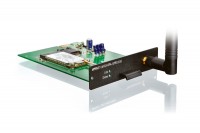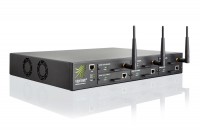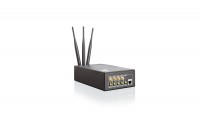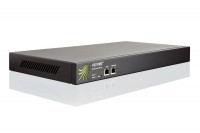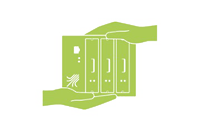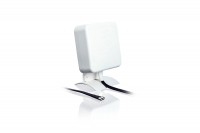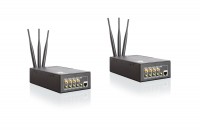Video streaming by bundling DSL, UMTS and LTE
The world here and now
Viprinet has developed a special bonding mode for the professional streaming of moving images - DSL, UMTS / 3G and LTE / 4G in any combination become the ideal medium for high-quality and reliable video streams
Your benefits of video streaming based on the bundling of DSL, UMTS / 3G and LTE / 4G:
- Viprinet easily keeps up with dedicated streaming appliances - and can do even more
- Consumer WAN Media (DSL, UMTS / 3G, LTE / 4G) can be combined arbitrarily with more exclusive media (satellite radio) to improve bandwidth or as a fallback
- According to the requirements, the bonding may focus on high bandwidth or low latency (Only streaming or interaction too?)
- Viprinet has developed effective functions against jittering - no more jerky videos
- Streaming optimization through redundant packet transmission: Only the fastest packet comes through
- Not only does Viprinet stream, it also transports other data - controlled by a freely configurable Quality-of-Service system

Video Broadcasting - Particular requirements necessitate a particular concentration
Timeliness is a basic requirement for any kind of broadcast. Regardless whether sport or cultural events have to be covered, or whether directly transmitted reports or interviews are concerned - everything must be transported to the consumer as quickly as possible. Whoever reports something first,gets the majority of the attention - the yardstick for success in reporting.
Since locations don't comply to whether sufficient bandwidth is available on site, producers have to rely on organizing this bandwidth if necessary. For that, sometimes there is little time. In the end, it's always satellite radio that is reverted to in these situations; the problem here are the costs and the extremely high latencies (signal propagation times).
The bundling of DSL, UMTS, LTE and satellite radio makes you independent.
The Viprinet bonding of DSL, UMTS / 3G, LTE / 4G and satellite radio, for instance, gives producers on-site the flexibility they needs: If wired media such as DSL are at hand, they can make use of these broadband and low-latency media - at lowest costs. These connection technologies can of course be bonded with each other (DSL with n DSL) or with other media (3G / 4G).
If no wired media are available, sufficient bandwidth can be facilitated by coupling UMTS / HSPA+ / 3G and/or LTE / 4G (depending on the country CDMA too). The only drawback then is the slightly higher latency, which is not important when only streaming. It only plays a role, for example when an interview between the reporter on the spot and a broadcast center is held. If the latency is too high, agonizingly long pauses occur. The latencies of mobile phone connections, however, are still lower than that of satellite radio links.
The latency of WAN connections can be crucial for the quality of video streaming experienced
Just the signal propagation time from the point of transfer to the satellite in an orbit of 22,400 mi, from there back to the broadcast center, and then all the way back again can take seconds to complete - this makes a normal flow of conversation impossible. Modern mobile phone media like LTE / 4G are outstandingly suited for such scenarios, since the latency for this type of transmission usually lies significantly below 100 ms.
No matter which connection scenario: With Viprinet's DSL, UMTS / HSPA+ / 3G, LTE / 4G and satellite radio bundling, the proper media mix is always at hand - for the ideal and immediate transmission of high-quality video streams.

